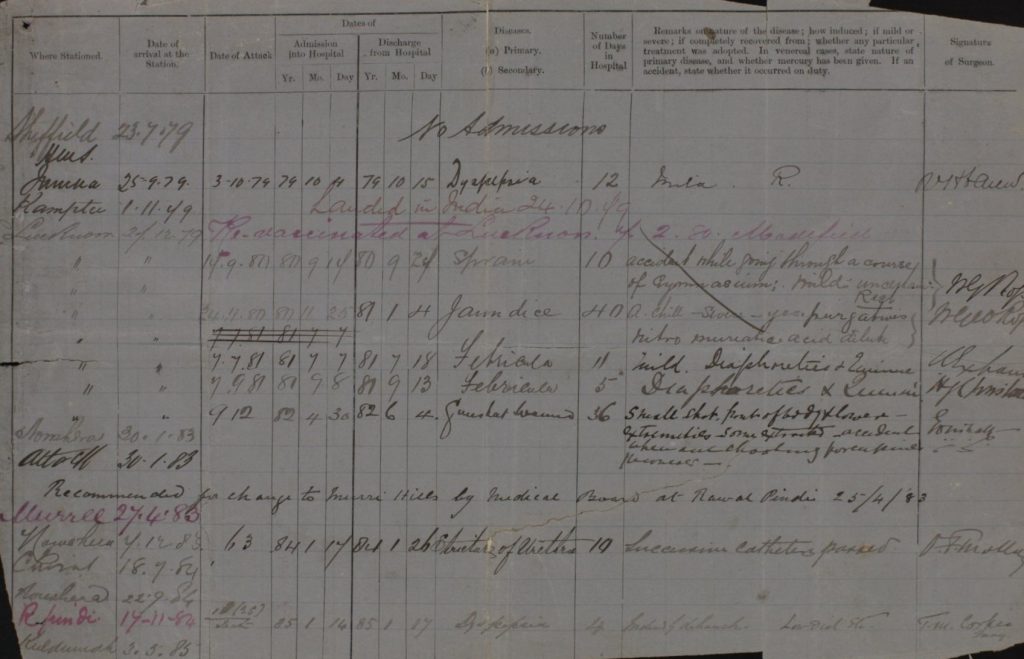There are over a million other ranks’ service records in series WO 97. Findmypast publishes – at the time of writing – 1,040,329 records from this important series which date back to 1764. You won’t find records that are that early on British Army Ancestors but you will find hundreds of thousands of papers for men who served in the Victorian and Edwardian armies.
Unlike the records in WO 363 and WO 364 which were microfilmed in black and white, the papers in WO 97 were imaged in colour and so not only do you get to see the information on the papers, you also see the colours of the papers which were used. With colour images it is also clearer to see when information was added, the different colour inks being useful guides here.
As for the information itself, be warned that the vast majority of these papers had been heavily weeded before the collections were ever accessioned by The National Archives. Our earnest and well-meaning civil servant ancestors could never have envisioned that soldiers’ papers would ever have value for future historians in an unimagineable digital age and given that the British Army generated tons of forms and correspondence it is easy to see why so many files were so ruthlessly weeded.

Typically, what survives in WO 97 is a soldier’s four-page attestation paper as it is the attestation paper which gives a concise summary of a soldier’s service, from the time he enlisted until the time he was discharged time-expired. Occasionally, medical records may also survive and these can often give very useful information about a soldier’s location, not to mention his ailments. Medical records will often also give the names of the Transport ships which took him overseas and returned him to the UK. In the example above, this soldier’s service between 1879 and 1885 is clearly spelled out. He was at Sheffield in 1879 and then sailed aboard HMS Jumna for India where he was stationed at Kamptee, Lucknow, Nowshera, Rawalpindi and various other stations. He was recommended to spend time in the Muree Hills for the benefit of his health.
For the most part, the information that survives in these pre First World War service papers is a little on the thin side. Years of weeding by over-zealous Whitehall clerks has consigned millions of pages to the ubiquitous skip or bonfire and what reamins if often little more than a summary of service expressed through attestation papers. Having said that, attestation papers can often be rich in detail which is why, after all, these papers were often retained at the expense of others.
If you're lucky, there may also be surviving medical papers. These are extremely useful for the modern day historian as they often give detailed information about where a man was stationed. When he moved from one station to another, the location was recorded on his medical form and also the date that he arrived there - see the sample form on the left. If he was admitted to hospital, the location, dates of hospital admission and discharge and disease were also recorded, together with notes regarding the treatment adminstered.
The man whose papers appear on this page was admitted to hospital on Lucknow on the 9th December 1882 having been accidentally shot whilst out hunting porcupine. He had small shot in the front of his body and lower extremities and remained in hospital for 36 days. A case of British Army O:1 Porcupine. Image courtesy The National Archives as discovered on Findmypast.